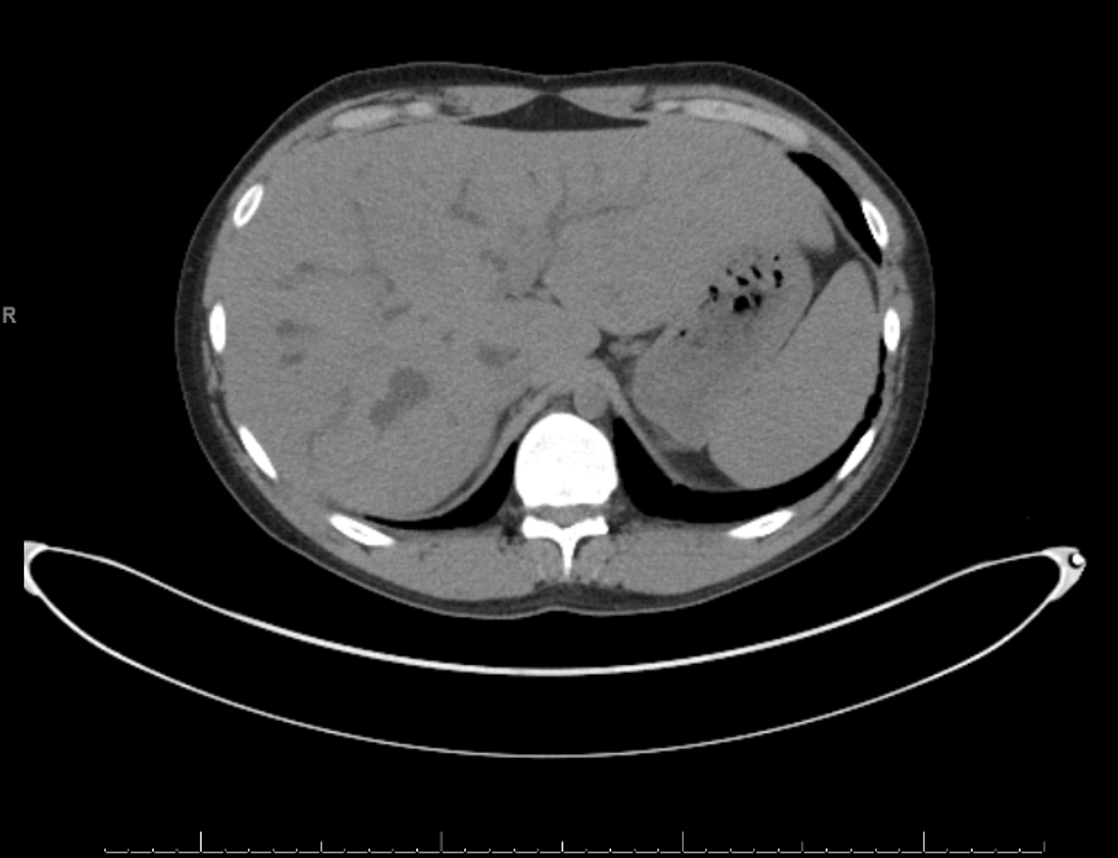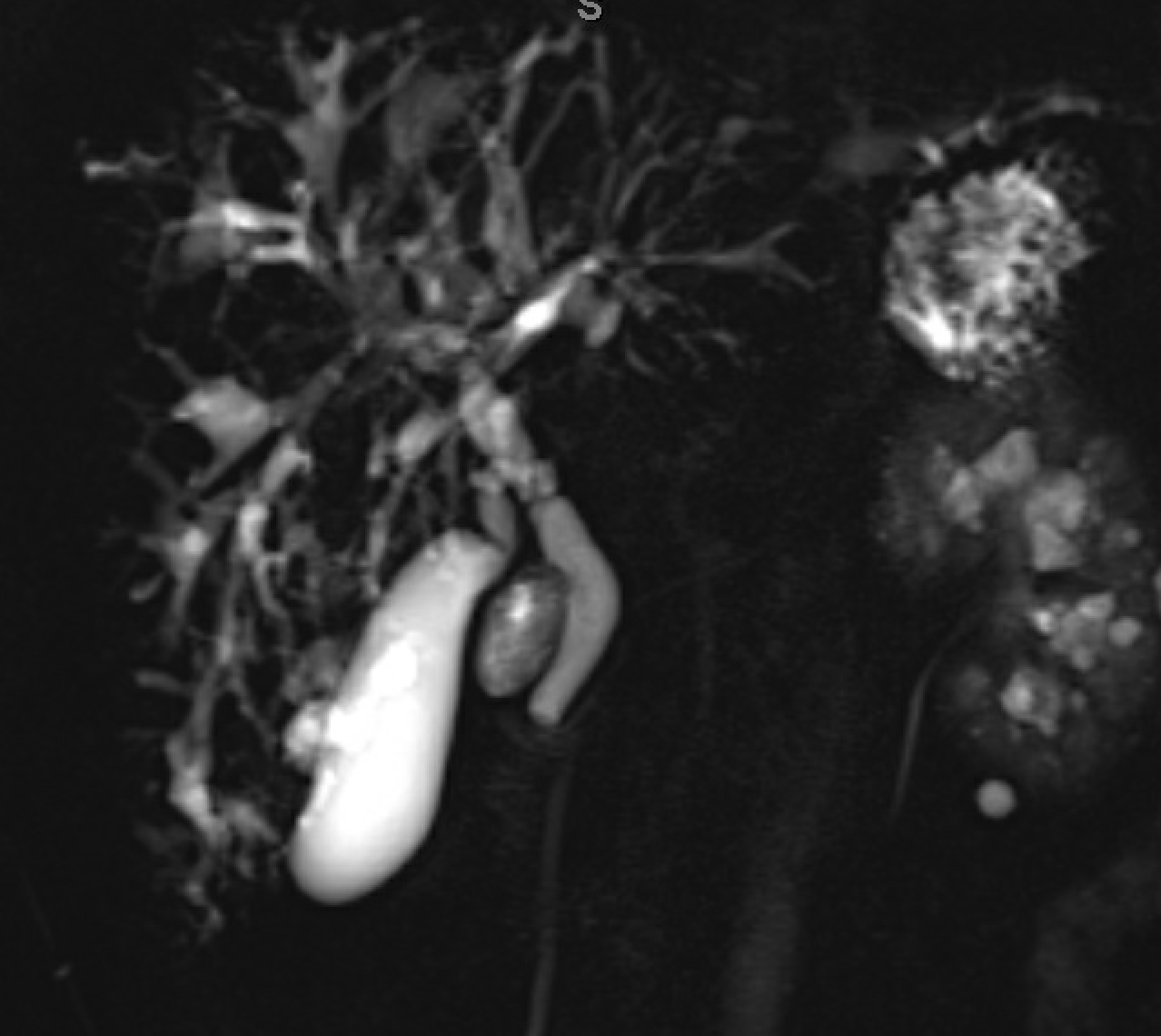Case Presentation: Raoultella ornithinolytica, a close relative of the genus Klebsiella, is a rare, Gram-negative bacterium known to cause biliary, pulmonary, and urinary tract infections in elderly or immunocompromised hosts. This case illustrates an unexpected discovery of Raoutella ornithinolytica bacteremia in a 20-year-old immunocompetent male with an underlying congenital condition called Caroli disease.A 20-year-old male without known prior medical history presented with four days of abdominal pain, dark stools, and nonbilious emesis. Labs were notable for elevated creatinine of 4.08 mg/dL and alkaline phosphatase of 112 u/L. HIV testing was negative. CT abdominal imaging revealed previously undiagnosed Caroli disease, a condition characterized by congenital dilation of intrahepatic bile ducts leading to functional biliary obstruction. Patient underwent MRCP which revealed acute cholangitis. Blood cultures grew Raoultella ornithinolytica. The patient was treated with ceftriaxone and metronidazole. The patient underwent subsequent ERCP which confirmed the biliary strictures and dilations of Caroli disease without evidence of purulence or biliary sludge. He was discharged with ursodiol. The patient has since been hospitalized multiple times since this initial encounter for recurrent bacteremia with pathogens including Raoultella planticola and Klebsiella pneumoniae.
Discussion: Caroli disease has a known predisposition to recurrent episodes of cholangitis, which may or may not be complicated by bacteremia. This congenital malformation of the bile ducts likely leads to stagnant bile flow and consequently increases the risk of infection, even in immunocompetent hosts. Infections with other unusual organisms such as Enterococcus gallinarum and Eggerthella lenta have been documented in patients with Caroli disease, however Raoultella bacteremia has not been characterized in this patient population.
Conclusions: To date, there are no existing case reports of Raoultella ornithinolytica causing bloodstream infection in patients with Caroli disease. Discovery of Raoultella bacteremia in young, immunocompetent individuals may be an important clue to signal underlying biliary tract disease.


